| |
High intensity discharge lamps make up the bulk of outdoor light output in the U.S.; they include:
--Mercury vapor, which give a bluish light; these are the oldest and least energy-efficient common type of gas discharge lamps, and are generally being used less and less as time goes by;
--Sodium vapor, which comes in two forms: High pressure sodium, which casts the bright orangish-yellow light so ubiquitous to much of the street lighting in the U.S. now, and the less common low pressure sodium, which casts a much deeper yellow light;
--Metal halide, which casts a brilliant, fairly white (sometimes slightly blue) light.
Fluorescent lamps are long tubes (straight or coiled), usually with whitish light output; they are actually mercury vapor lamps, coated on the inside with phosphors which glow when exposed to the mercury output; they are often used in sign lighting, and sometimes on building exteriors, but they are best known for lighting offices and other building interiors. "Neon" lamps are long, narrower tubes, sometimes bent into shapes; most often, they are actually fluorescent lamps with colored phosphors (rather than true glowing neon).
Light-emitting diodes (LEDs) are only just starting to appear in exterior lighting; their technology is improving, but their total light output per unit is not yet up to that of gas discharge lamps (even though their energy efficiency can be similar). They are currently replacing incandescent lamps in traffic signals, in some area lighting where high illumination is not required, and in prototype street illumination installations.
Fixture Design: Efficient vs. Wasteful
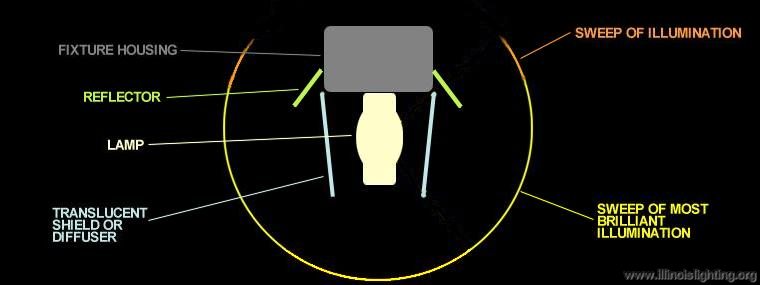
Cutaway diagram of light fixture construction,
with key to parts and showing how the fixture distributes the output of its illumination. The same colors and symbols will be used on each fixture diagram in the sections below. |
Outdoor lighting fixtures or "luminaires" come in a wide range of designs. Some are engineered to supply ample lighting to areas where nighttime illumination is needed, while not wasting energy by shining light outside of that area and causing glare and light trespass; others are designed with absolutely no consideration of the issues of energy waste, safety, or environmental degradation. Still others fall somewhere in between the two extremes.
What Is "Cutoff"?
Lighting engineers use the term "cutoff" to describe the line between the part of a light fixture's surroundings which it illuminates and the part which it does not. A bare bulb on a stick would have no cutoff (except the shadow cast by its socket/base). A "full cutoff" fixture is sometimes defined as one which shines all of its light outward in a hemisphere (with the hemisphere facing downward, and no appreciable light shining upward above the horizontal). Unfortunately, that sort of fixture can still shine intense light out to its sides, wasting light and creating glare and light trespass. We strongly believe that outdoor illumination should be limited to "fully focused" luminaries, in which the lamp's total light output is focused by the fixture into cone-shaped beams, directed only into the areas to be purposely illuminated. The angle of cutoff on a fully focused fixture will depend on the mounting height and the size of the area to be illuminated, but 24° to 40° below horizontal is a normal range.
Schematics Of Some General Fixture Types
|
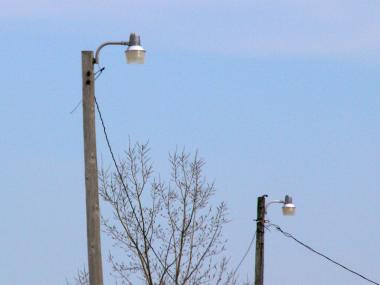 |
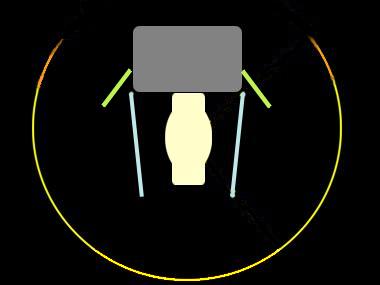 |
"Barnyard" style fixturesWith high wattage lamps, they can light the area under them, but most of the energy output is wasted to the sides and upward. This design has long outlasted its usefulness, but is unfortunately still manufactured.
|
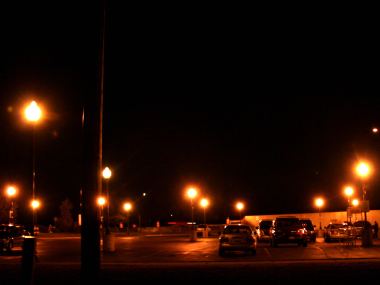 |
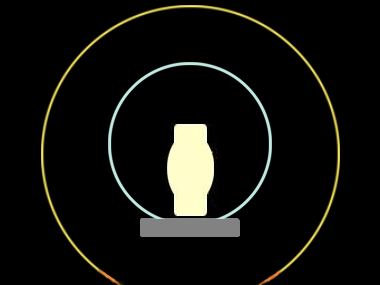 |
Fixtures with globes on pole topsWhether round or "acorn"/"torch"-shaped, these completely unshielded fixtures waste the vast majority of their energy output, sending light everywhere except under themselves.
|
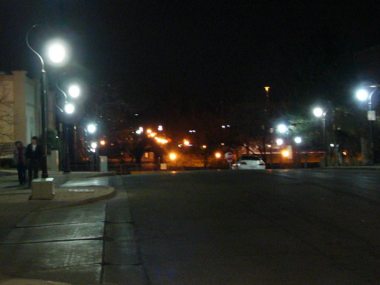 |
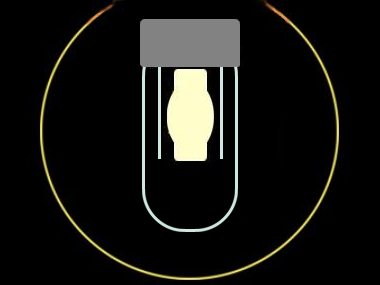 |
Fixtures with hanging globesA virtual repeat of the last fixture above, except upside-down; a tiny benefit of having their own shadow cast upwards instead of down, but still great energy wasters and glare producers.
|
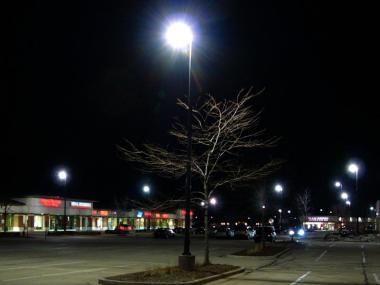 |
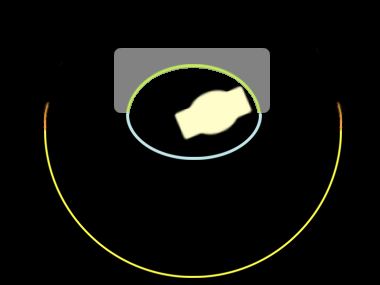 |
The recessed lamps, with a reflector to send the light which the lamps emit in the wrong directions down to the desired ones, are much more efficient than the two types above, and can use lower wattage lamps to achieve the same area illumination levels. They can still emit bright light up to almost horizontally, though; this wasted energy can cause unsafe and unsightly glare.
|
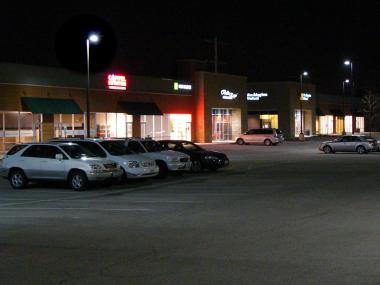 |
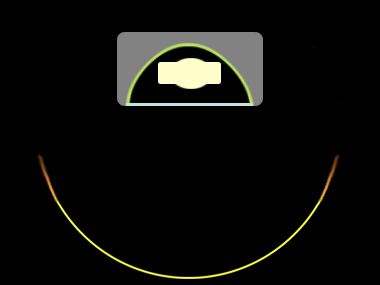 |
This most efficient type of fixture directs all of the lamp's energy output on the area the fixture is meant to illuminate. If they are properly installed, glare is eliminated, as are energy waste and light trespass.
|
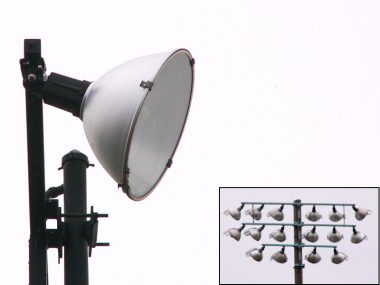 |
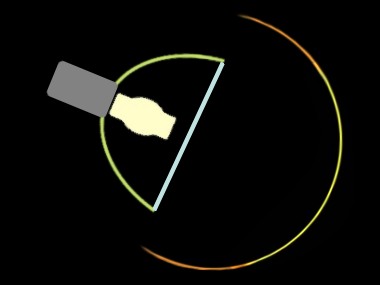 |
Typical sports field lighting fixturesThese fixtures create intense beams of light, and are typically installed in banks, so that the beams overlap and provide brilliant illumination over a wide area (inset shows bank installation). Unfortunately, they also throw light in a wide swath outside of the somewhat focused beam. Shields are sometimes added to absorb or re-direct some of this stray light. Lamp up to 1,500 watt are commonly used in these fixtures (a single 1,500W metal halide lamp can emit 170,000 lumens).
|
| |














